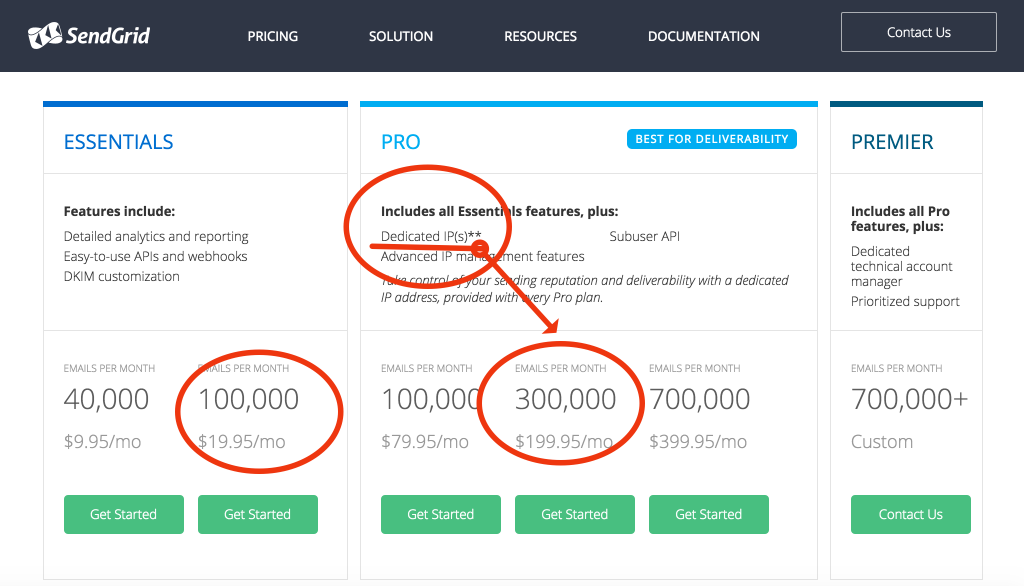Cold email campaigns are one of the most effective ways a company can begin sales conversations that drive new revenue.
That said, too many businesses fail to recognize that sending cold emails is a bit like playing with fire—it’s easy to hit “send” too soon and get burned. Send out an error-ridden or confusing message and put your reputation at risk. Email an unqualified lead and find yourself caught in a spam filter. Blast a campaign from the wrong email platform and watch your IP address get blacklisted.
Every week, businesses large and small burn sales leads on easily avoidable mistakes. Take note of these common outbound-email errors if you don’t want to fall victim to them:
1. Sending a bulk email campaign without testing
Too often, companies try to scale their cold email campaigns without first understanding what works and what doesn’t. Outbound-email campaigns should be rolled out in incrementally larger batches. Why risk burning an entire list of potential leads with emails that won’t convert? Instead of blasting on a large scale, test your emails on a smaller sample at each stage to see what works. Refine, revise, and test again.
2. Emailing above the decision maker
There are a number of so-called sales gurus who will tell you to always go straight to the top and get referred down to the decision maker. But why waste time on unnecessary steps?
Sure, you probably don’t want to speak with every entry-level rep at the company, but it’s also a waste of time to ask the CEO about, say, who you should pitch your job-application-tracking software to. Rather than aiming for the biggest title, reach out to the most relevant decision maker—the head of human resources, in this case. This is especially important when selling into larger organizations.
3. Chasing the wrong leads
Just because someone responds to your emails or takes your meeting doesn’t mean you’re making progress toward closing a deal. Talking to the wrong people—like gatekeepers or buyers without budget—is a waste of everyone’s time. By better qualifying your leads up front, you can make sure you’re speaking with someone who has the interest and the decision-making power to purchase your product or service.
4. Embracing automation too soon
There are tons of amazing sales tools out there, but even they won’t make you or your company bulletproof against basic human error. In fact, where mistakes exist in your campaign strategy (such as missing campaign details or product-market mismatches), an efficient tool will only make you fail faster.
Don’t just subscribe to expensive platforms that try to automate everything. Instead, make sure you’re selling your product to people who are open to buying it. Build your campaigns around real sales conversations and apply the knowledge you’ve gained from past closed deals.
5. Sending emails one by one
Having your sales team manually send emails one at a time is a drain on resources, and there’s no reason that interesting, personalized emails can’t be produced on a larger scale. Where you’ve had success with one-off emails, try to “reverse-engineer” them into email templates you can send out in bulk. Not only will you save on human resources, you’ll also have a more concrete sense of how your individual email campaigns are performing.
6. Sending lazy or untargeted emails
Don’t use impersonal, canned email templates. What may have worked five years ago will now be easily recognized as overplayed and underwhelming. If you want to get responses, you have to write for a specific buyer persona, targeting your messaging and personalizing your cold emails with custom inserts.
7. Forgetting to proofread your emails
Error-ridden sales emails will instantly kill your credibility. Before sending, reread your emails aloud to check for obvious spelling and grammar mistakes. Never send a mail merge without first test-emailing it to yourself to make sure all merge tags work correctly and that the formatting doesn’t look weird.
8. Failing to pre-screen your data
Nothing scares a potential customer away faster than referring to their company—or them—by the wrong name. A company’s legal name may be listed as “Eastman Kodak Company,” for instance, but if you called them that in an email—instead of simply “Kodak”—you’d give your message away as a poorly-screened mail merge.
Don’t ruin the personalized impact of your carefully worded email. Check and clean the contact info on your mailing list before sending out a campaign, especially if the list is built with software or purchased outright.
9. Overlooking gaps in your data
There’s nothing better than a highly personalized email template, but you need to be sure that you actually have the personal information your email includes.
Let’s say you write a mail merge template that references a company’s client with {!Client}, but you don’t have that information accounted for in your list database. The minute you send, your email template will be revealed. Sure, it’s not the most damaging error, but it definitely defeats the time you spent personalizing your campaign. And you’ll look, not to mention feel, foolish.
To avoid this, have a backup at hand for any customized fields. For the example above, you could include code that would substitute the words “your client” wherever there’s data missing in your list database. That way, you can keep personalizing without putting your campaigns at risk.
10. Sending boring follow-up emails
Sending a series of bland and boring emails that repeat the same things over and over does not qualify as following up. In fact, it’s a surefire way to get your emails marked as spam. If you want to send follow-up emails that get results, make sure you add unique value and new information to each email you address.
11. Giving up too soon
Thirty-three percent of all responses come from emails five through eight in an eight-touch campaign. In other words, don’t give up if the first one doesn’t get a response. Unless you’ve already had contact with your prospective customer, you should plan on sending the full eight emails. Persistence pays off when you have the courage to keep at it.
12. Hitting a dead end… and still going
Yes, persistence pays off, but you don’t want to become an obnoxious e-stalker. If your target hasn’t responded after eight emails, or if they ask you not to contact them again, it’s okay to throw in the towel. Shift your attention to new prospects, and don’t forget to apply what you’ve learned when you next reach out.
Do you have other questions about best practices for cold emails or outbound sales? If so, just write them in the comments below, and I’ll try to answer the best I can (if they’re complicated, I might just turn them into another article!).




